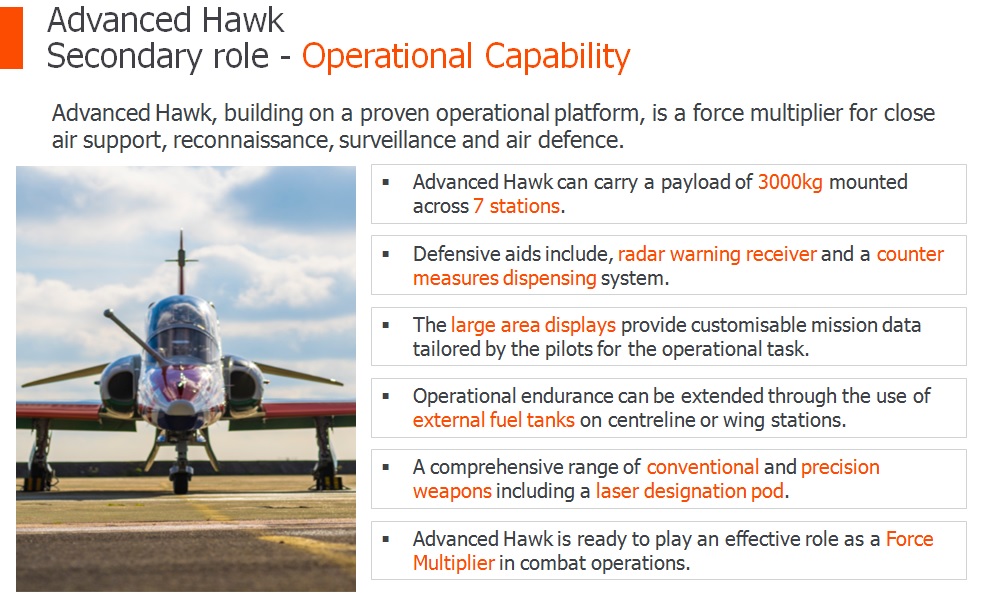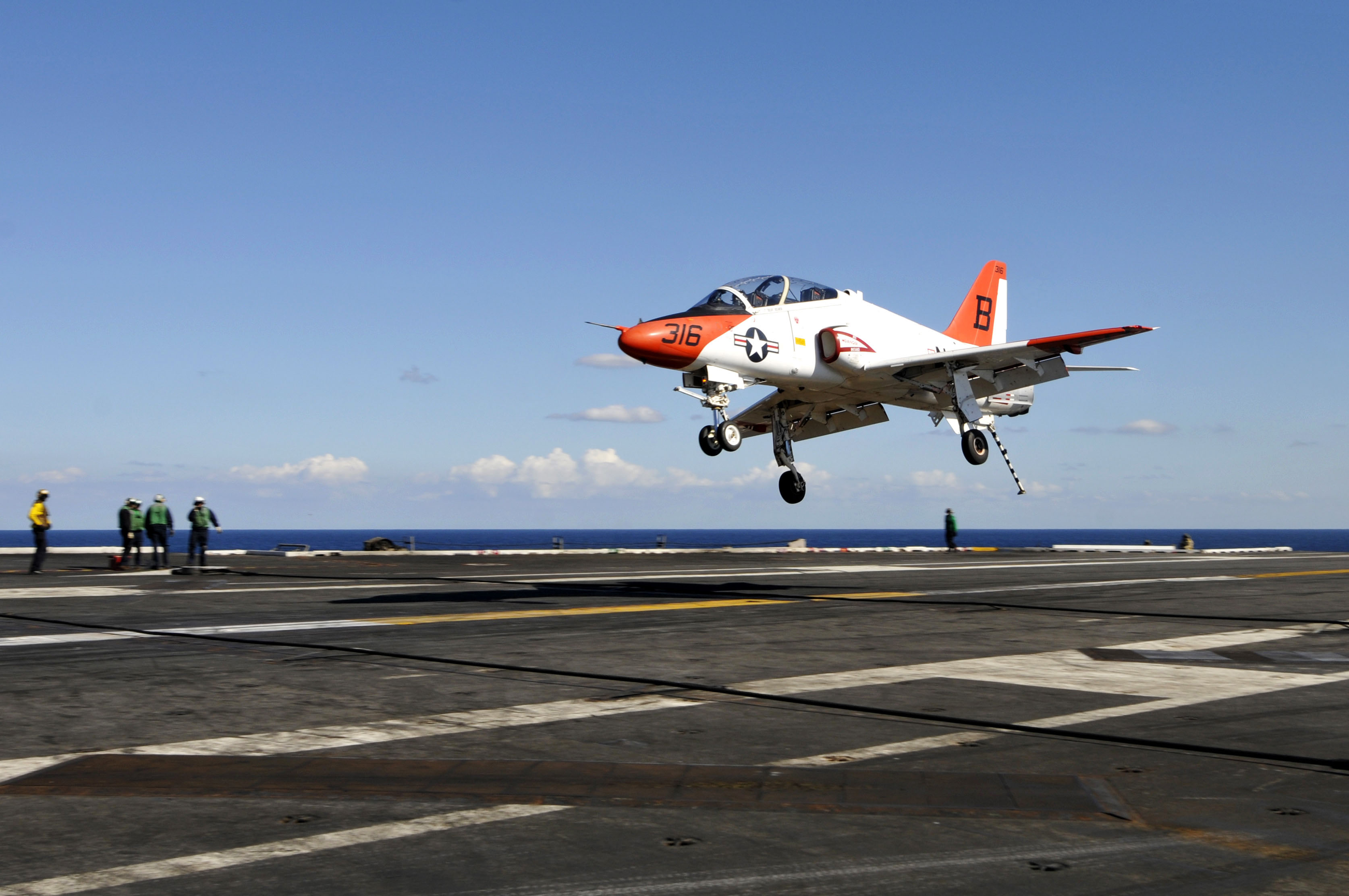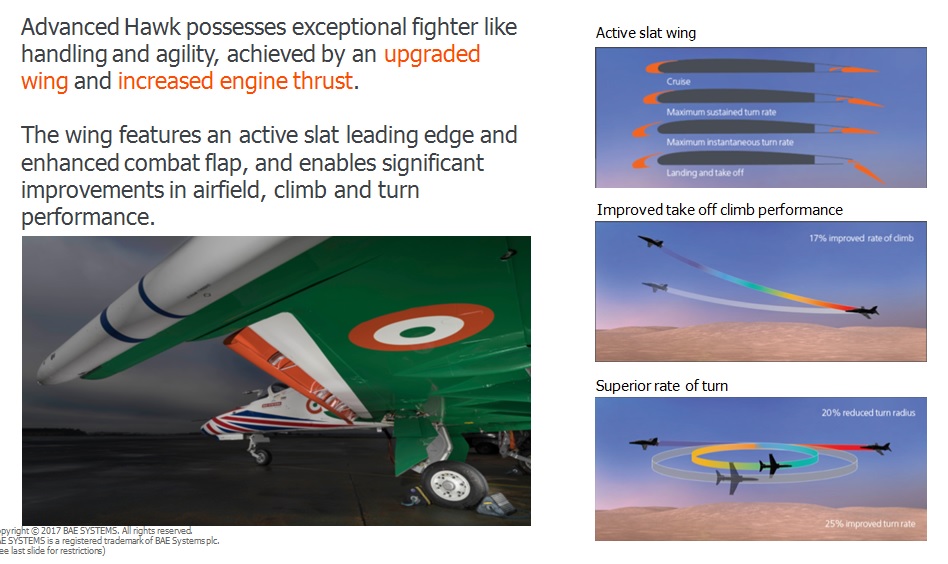REVEALED: The BAE-HAL Joint ‘Advanced Hawk’
Shiv Aroor Feb 05 2017 11 30 pm
Revealed exclusively here on
Livefist before its formal unveiling later this month, this is the
Advanced Hawk. A joint BAE Systems-Hindustan Aeronautics effort that elevates the proven Hawk jet trainer to a significantly more capable aircraft platform, closer in performance — both real and synthetic — to the fighters it trains pilots for. The 50-50 commercial project with equal risk by the two companies, funded internally over 24 months, has culminated with this single demonstrator aircraft that will be revealed for the first time at the Aero India show on Feb 14 outside Bengaluru.
The product will be jointly marketed by BAE Systems and HAL to existing and new potential customers across the world, with a projected market for at least 300 airframes over ten years, all or most of which will be built in and exported from India, with several Indian technologies and systems.
In details shared exclusively with
Livefist, it appears clear that the Advanced Hawk is more than just a fine-tuning of the Hawk, but an upgrade that encompasses perhaps the first deep dive in years into what the Hawk stands for, beyond being just a lead-in fighter trainer.
The changes in the Advanced Hawk are significant. For instance, the Advanced Hawk sports HAL-led engineering tweaks to the aircraft’s wing — the addition of an active slat leading edge and an upgraded combat flap — which adds more flying envelope across the spectrum. Other changes, detailed in the schematic below, importantly include increased engine thrust on the Adour Mk.951, a smart weapons capability (which is probably why HAL has designated it the ‘Combat Hawk’ in internal communications), air-refueling and a brand new panoramic multi-display centered glass cockpit.
In a wide-ranging interaction with BAE Systems top leadership on the Hawk programme, including Air Chief Marshal Sir Glenn Torpey, former RAF chief and now senior military advisor at BAE,
Livefist obtained the full picture on the first significant Indo-British joint aerospace effort in decades, one that looks to stimulate demand among existing trainer operators and capture markets looking to acquire the Hawk capability. The Indian military operates 123 Hawk Mk.132 jets that provide Stage-III training before pilots progress to operational fighters like the Mirage 2000, Su-30MKI, MiG-29 or Jaguar. We break down the Advanced Hawk effort:
1. The airframe used to demonstrate the Advanced Hawk is one o
f two development aircraft owned by BAE Systems. Engineering changes were made directly to the platform by BAE and HAL in the UK. The aircraft was then brought down to Yelahanka, where it will fly for the first time in its new trim shortly after the Aero India show.
2. BAE and HAL will look to stimulate demand for the Advanced Hawk not just among new customers, but to existing operators as well. India, one of the world’s largest operators of the Hawk, has begun receiving briefings from BAE-HAL on the projected advantages of inserting the Advanced Hawk into future training — as a possible step between the existing Hawk and high performance fighters. The principle advantage being projected is the ability to shift mandatory flying training on frontline fighters to the Advanced Hawk, saving costs and freeing up those fighters for operational tasks and extending their operational life. BAE officials said an internal study indicated at least 30% of current frontline training by the IAF could be downloaded to the cheaper Advanced Hawk with no loss of regimen or rigour. But there are challenges. Already saddled with high value acquisitions and a list of other priority platforms it needs (not to mention an existing Hawk fleet), it will be a hardsell stimulating demand within the Indian Air Force, certainly in the short term. On the other hand, the IAF’s training curriculum has been buffeted by flux over the last few years, and per force compressed with the absence of a ready intermediate trainer. Could a fleet of Hawks brought up to the Advanced Hawk standard simply accelerate the scrapping of intermediate training altogether?
“It’s like putting a Ferrari between a Mini and an Formula-1 car,” says Dave Corfield, head of Hawk India at BAE. The RAF’s Mk.128s can’t simulate the F-35 sensor environment, but the Advanced Hawk can, says Corfield, indicating an immediate market opportunity.
3. Apart from an expanded flying envelope that more physically mirrors the flying qualities of high performance fighters, a major part of the Advanced Hawk pitch is the synthetic fighter environment it simulates for frontline sensors and weapons. Air Chief Marshal Sir Glenn Torpy, who trained on the Hawk Mk.1, has flown in the new synthetic environment afforded by the new generation Hawks (including the Hawk Mk.128s in service with the RAF). “It’s a quantum leap,” Torpy tells Livefist. “Pilots don’t realise they don’t have a real radar or radar warning receiver. It’s very real.”

4. Importantly for India, the BAE-HAL effort seeks to plug fully into the Make In India thrust, making it likely that interest in the platform will directly mean more jobs in India and expanded business for the existing Indian supply chain. The Advanced Hawk, therefore, will make use of the existing Hawk production line in Bengaluru. BAE and HAL, which have both invested internal funds as part of a 2015 MoU, may escalate that into a joint venture or other commercial arrangement (subcontracting/licensing) to administer the Advanced Hawk programme. Depending on interest from customers, the Advanced Hawk could be built in India or the UK — or both. “There’s a low cost production line in India. This could be built in the UK, but it’s cheaper to build it here,” says Corfield.
5. HAL, which has unofficially designated this effort the ‘Combat Hawk’ so far, has done so for a reason. The Advanced Hawk is the first Hawk platform with a specific combat capability, a pitch that straddles both its capacity to simulate frontline weaponry, and also as a combat force multiplier by itself. With a beyond visual range and precision strike capability, several developing economies could see the Advanced Hawk as a combat platform by itself for close air support and so on.

6. The Indian contribution to the Advanced Hawk is tangible — way more than other so-called joint programmes. Apart from the wing re-design conducted by HAL, the new platform will also sport the slat actuation system from the LCA Tejas. The Advanced Hawk will also offer options for an Indian mission computer, secure comms, datalink and countermeasures systems. A Hawk oversight committee, comprising UK trade and industry and India’s Department of Defence Production have been discussing other areas of synergy in the programme. The group meets next after Aero India in Chennai at which point the Advanced Hawk team will have a clearer picture about global interest.
7. Existing Hawk customers will also be offered the opportunity to choose upgrade modules from the programme, or simply upgrade their fleets to the Advanced Hawk standard. Depending on the customer, BAE and HAL will jointly decide where such upgrades will take place.
Apart from the demonstrator airframe, BAE Systems will also be bringing a full mission simulator of the Advanced Hawk to Aero India this month.






















